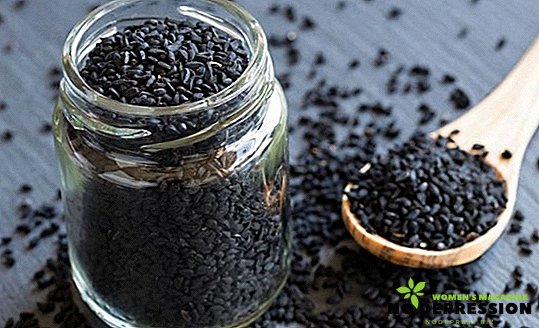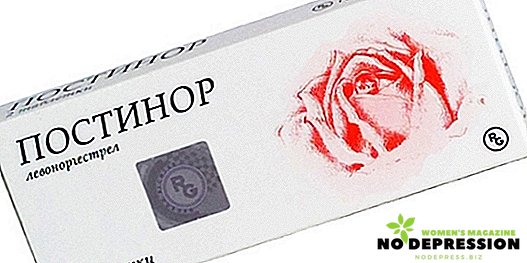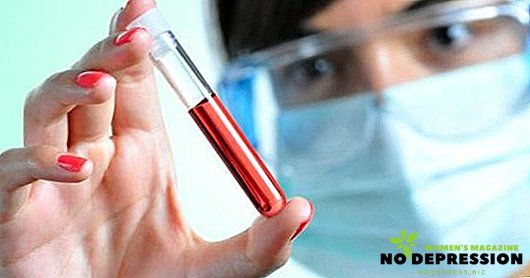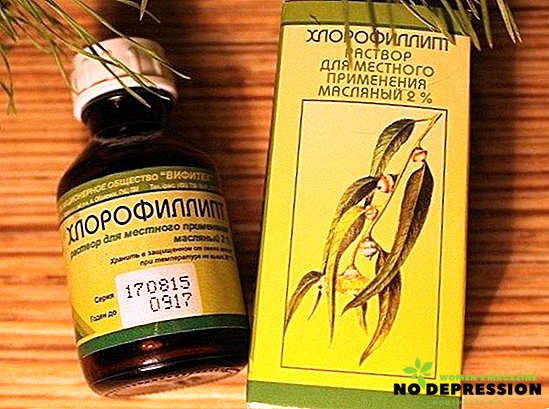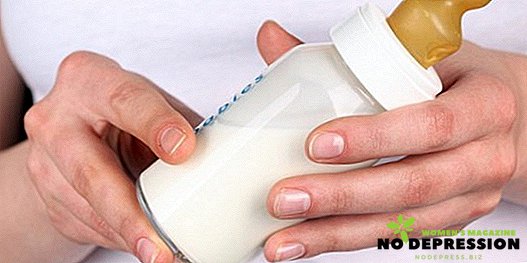Small children, especially infants, are more likely to suffer from various diseases, since their immunity is at the initial stage of formation and has not yet fully strengthened.
Most often, on small children's cheeks, a rash appears, called diathesis. How to recognize it and how to treat it, you will learn from this article.
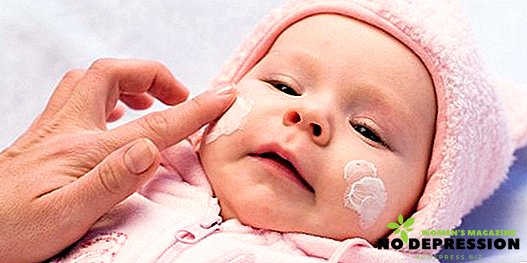
Description, types and causes of diathesis in infants
Diathesis, as such, is not a disease. But his appearance is a signal that not everything is all right with the child’s health.
A timely referral to a pediatrician will help prevent the occurrence of more serious diseases, such as psoriasis or emphysema.
Understand that the baby has diathesis, can be on the characteristic redness on the cheeks. But, in addition to the main symptom, the disease is also manifested by disorders of the nervous system, skin diseases and diseases of the glands and lymph.
There are the following types of diathesis:
- Neuro-arthritic. This species is a hereditary disease. The reason for its appearance is the improper elimination of uric acid decomposition substances from the child’s body;
- EKD (exudative catarrhal diathesis). Characterized by the appearance of red spots on the skin, inflammatory processes on the mucous membranes, deterioration of immunity, the appearance of skin diaper rash, seborrhea on the head;
- Lymphatic-hypoplastic diathesis. This type of diathesis occurs in infants in the event that the mother during the period of pregnancy suffered an infectious disease. In most cases, this affects the health of the newborn. The signs will be inflamed lymph nodes, an enlarged thymus gland, and a malfunction of the endocrine system.
The following reasons may influence the future baby’s diathesis:
- genetic predisposition;
- improper feeding of the baby in the first month of his life;
- improper nutrition of women during pregnancy;
- toxicosis lasting the entire period of pregnancy;
- medication during pregnancy;
- unfavorable ecology;
- overfeeding the baby;
- introduction of complementary foods earlier than prescribed;
- failure to comply with the nutritional standards during the breastfeeding period, for example, the use of allergenic products;
- lack of vitamins and minerals.
Symptoms of the disease
To understand that a child has diathesis, it is possible by the following characteristic features:
- Diaper rash that lingers on the skin for a long time. The main places of localization are the groin, the parotid region, and the folds of the arms;
- Dense scaly scabs that appear on the cheeks;
- Rash of seborrhea on face and head. It can be distinguished by a beige shade and a loose structure. Such a rash passes quickly, but has the feature of often returning;
- Eczema, which manifests itself in the form of skin cracks;
- The formation of a large number of small colorless bubbles throughout the body.

Redness on the cheeks never go away on their own. To eliminate them, it is necessary to exclude products-allergens from the diet, as well as to treat with necessary medications, which are prescribed only by a pediatrician.
Symptoms of diathesis appear on the mucous membranes of the child:
- Conjunctivitis - inflammation of the mucous membrane of the eye;
- Rhinitis is a disease of the nasal mucosa, resulting in large mucus secretions;
- Inflammation of the throat causing coughing;
- Failure of the normalized work of the digestive tract, which is accompanied by nausea, vomiting and regular diarrhea;
In addition, diathesis is characterized by the manifestation of other, common symptoms:
- Decreased appetite, constant refusal of food in the newborn;
- Permanent bouts of anxiety in a child, manifested by crying;
- Regurgitation appearing more often than usual;
- Restless sleep

Treatment of diathesis in infants on the face: general recommendations
The treatment of diathesis on the face of infants needs to be approached comprehensively, and you need to start by adjusting the nutrition of the nursing mother.
This method of treatment involves a special diet, which excludes the use of citrus and exotic fruits, dairy products, smoked and spicy foods, sweets. Food should be healthy, enriched with plenty of vitamins and macronutrients.
As for the nutrition of infants themselves, here it is necessary to fulfill the following requirements:
- When breastfeeding a child needs to be applied to the breast more often, and the type of feeding itself should not be stopped before half a year;
- When artificial feeding it is necessary to carefully select the milk formula to the child, it is preferable to give the choice to hypoallergenic species;
- When the time comes for the first feeding, you should start it with zucchini, broccoli and potatoes.
Child hygiene is also included in the range of therapeutic measures against diathesis. An infant should be bathed daily, only appropriate cosmetics should be applied to it. For washing children's clothes you need to use only special products marked "for children".

Diathesis in infants on the cheeks: drug treatment
Drug treatment is prescribed by a pediatrician in the event that the establishment of nutrition and hygiene are not effective enough.
To combat diathesis in infants, the doctor prescribes the following medications:
- Probiotics for children - drugs that normalize the microflora of the intestinal tract of the child, as well as eliminating the dysbiosis caused by diathesis;
- Antihistamines. These are drugs whose actions are aimed at eliminating allergies;
- Soothing - can be prescribed as additional drugs in cases where a child with diathesis behaves restlessly, constantly crying and does not sleep well;
- Vishnevsky ointment, Levomekol, Pasta Guzhienko - these ointments are used to remove redness, eliminate itching and flaking.

Treatment of folk remedies at home
Diathesis in newborns can be treated with folk remedies. The following methods are most effective, and the use of medicinal drugs can be canceled.
- During diathesis, the baby is bathed in a string and chamomile. This tool does an excellent job with peeling and itching. To prepare a solution of these herbs, it is necessary: dry the train and chamomile pour water and boil for 15 minutes; after that, the solution is left to infuse for half an hour, and then filtered through a colander or gauze; spend bathing the child with the addition of herbal medicine in the bath;
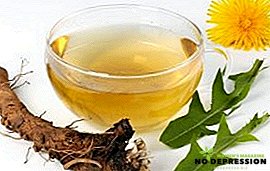
- Dandelion root is another version of popular treatment. The tincture is prepared as follows: a tablespoon of the crushed root of a medicinal dandelion is poured 200 ml of boiling water and infused for 2 hours; after, you need to filter the tincture. The finished solution is given to the child before eating 50 ml;
- Similar to a dandelion tincture, a tincture of burdock root is prepared;
- Means from an egg shell perfectly fights against acute displays of a diathesis. To prepare it, you need: the shell of a boiled egg is thoroughly washed and dried in a warm place for 3 days; then the shell is crushed to a state of powder and within 2 months is given to the child twice a day. Powder from the shell can be given with food or lemon juice.
What advises parents Dr. Komarovsky
The famous Russian pediatrician Yevgeny Komarovsky, in his discussions on the health of young patients, also touched upon the topic of diathesis in newborns.
Dr. Komarovsky says that there are 3 ways of appearance of skin rashes:
- through improper diet;
- through the contact path;
- through the airway.
Tips on how to avoid diathesis, the doctor gives the following:
- It is not necessary before it is necessary to introduce lactation to the baby;
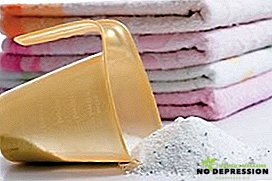
- Do not give your child exotic foods that are not typical for a particular region;
- Do not overfeed the baby;
- Do not bathe the child in chlorinated water;
- Wash baby clothes with baby powder and soap only. After washing, rinse things in boiled water or water without chlorine. If this is not possible, then washed things can be lowered into boiling water for a few seconds. This method will instantly destroy chlorine from children's clothes;
- Not only children's things, but also things of adults should be treated with children's detergents, since the child can contact them;
- It is necessary to bathe the baby with the use of children's hygiene products no more than twice a week, so as not to disturb the protective covering of the child's skin;
- Limit the use of various sprayers for the home, items that exude sharp flavors. If there are pets in the house, then it is advisable to take them to relatives for overexposure, since animal odor is one of the strongest allergens for babies.
Consequences of the disease and prognosis
Since diathesis is not a disease, it is not dangerous in itself. But, its consequences can negatively affect the health of the baby. So what can cause this ailment?
- frequent infectious diseases associated with a weakened immune system of the child;

- weight gain leading to obesity;
- rickets, anemia and leukemia;
- allergic diseases;
- violation of the digestive system, in particular, the formation of gastritis, ulcers.
EKD - this is the type of disease that can lead to serious consequences in the form of eczema, for example.
Neuro-arthritic diathesis leads to health problems during adolescence. During this period, problems of the skin are exacerbated, diabetes mellitus appears, renal dysfunction is formed, obesity occurs.
If you properly comply with measures to combat diathesis, the outcome of treatment is more likely to be favorable. By adolescence, the disease passes completely.
In the presence of lymphatic-hypoplastic diathesis, the probability of death in children under one year is only 10%.
Routine immunization and prophylaxis
When a new person is born, he is prescribed a course of planned vaccinations against various diseases. But, in the event that a diathesis was found in the newborn, then the doctors do not recommend giving vaccinations.
This is due to the immature immunity of the baby, which is just beginning to be laid. And routine vaccinations, for such an organism, can cause complications.
As for preventive measures against diathesis, they should be carried out even during the pregnancy of the future mother: healthy nutrition, elimination of the causes of permanent toxicosis, control of the blood iron level in the woman.
In a newborn child, preventive measures are as follows:
- Conduct, if possible, breastfeeding;
- Introduction to the diet of baby hypoallergenic products;
- Hygiene;
- Conducting preventive massage;
- Physiotherapy;
- Use of appropriate cosmetics;
- Caution in conducting routine vaccinations.
Despite the fact that diathesis is not a disease, but only a predisposition to them, it is not necessary to ignore its appearance on the child’s face. The disease can lead to the emergence and development of serious diseases that adversely affect the baby's fragile body.
And a little more information from Doctor Komarovsky about diathesis for babies.







